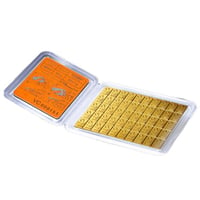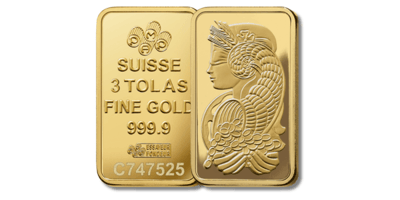Gold rallied to another new record high early Monday, extending the rally that began after last...
What Are the Worst Gold Products to Buy?
There is a lot of information on which precious metals products are the best to buy. There’s also a lot of misinformation out there. When the precious metals markets heat up, unscrupulous companies and scam artists come out of the woodwork, seeking to profit by taking advantage of new and first-time gold buyers.
With so many voices directing you where and what to buy, it can be challenging to know which of those voices are knowledgeable, reputable, and worth listening to. More importantly, which gold investments should you avoid?
There are a few factors here… not every gold or silver product is right for every portfolio or investor. It’s important to buy gold and silver bullion that meets your personal goals, whether you are buying gold for wealth insurance or profit. The right product for someone else could be the wrong option for you.
However, there’s also a number of available products that, we hate to say it, are downright scams. They count on newbie investors looking for a voice of authority to trust and taking advantage of their lack of experience in the gold markets by selling them products with high premiums and minimal return value.
Here’s what physical gold and silver products to avoid when looking for ways to strengthen your precious metals portfolio.
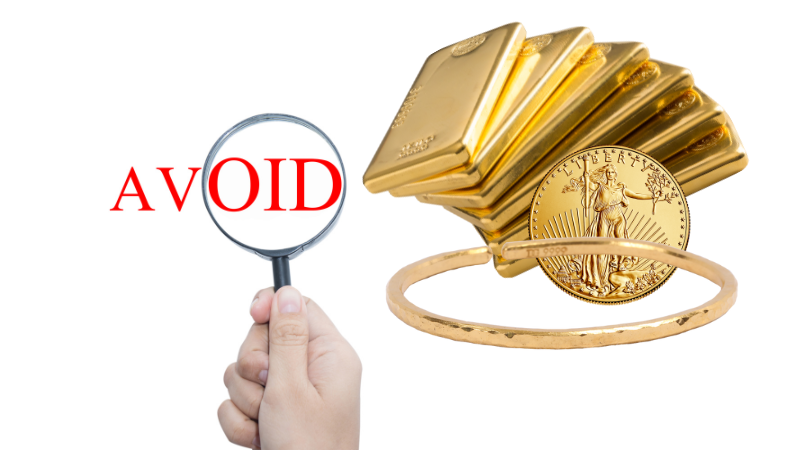
High Premiums
This requires a bit of research and attention to what is going on in the precious metals markets. There are times when high demand and short supply mean higher premiums on every fabricated bullion product on the market. Obviously, it’s better to buy when premiums are lower, but if you’re dollar-cost averaging or just want to get in the market, then you might bite the bullet and buy anyway. Here at ASI, we like to say there’s never a bad time to buy if wealth insurance is your goal!
That’s not what we’re talking about now though.
Certain products carry high premiums due to popularity, demand, or perceived exclusivity. If you want gold to act as a store of value in your portfolio, look instead for products with a comparatively lower premium. This may require you to do some price shopping or comparison, but in the end, your wealth will be better protected by choosing products that enable you to buy more gold or silver at a lower premium.
For instance, 1 oz. gold American Eagles are one of the highest selling bullion products on the market, but because of their popularity, they typically carry a much higher premium than other 1 oz. sovereign gold coins like the Canadian Maple Leaf, South African Krugerrand, or Australian Kangaroo.
Some buyers prefer the Gold Eagle for a variety of reasons… it’s American-made, it’s beautiful to look at, its content and purity are guaranteed by the United States government, and it can also be included in an IRA. They’re also instantly recognizable, and many buyers feel reassured that if they ever need to sell their gold coins, they’ll get fair market value.
This is 100% true, but when it comes to buying gold for wealth insurance, the best strategy is buying at the lowest premiums available, holding it, and letting time do the work over decades to increase your purchasing power. If other sovereign 1 oz. gold coins can do that for you, they’re likely the better option.
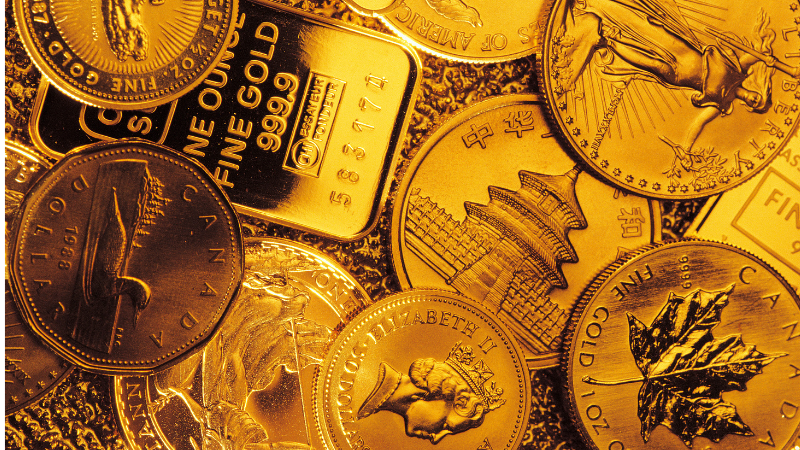
Too Good to Be True Pricing
High premiums carry a concern, but on the other hand, premiums lower than fair market value should also raise some red flags. In the private market, i.e. buying and selling between individual precious metals owners, there are bargains to be had from time to time. But if you’re buying from a gold dealer and the pricing sounds too good to be true… it probably is.
Sometimes, disreputable dealers will offer popular, easily researchable sovereign coins at an unbelievably low premium to hook a buyer, then also upsell a combination of obscure gold and silver coins that are hard to compare pricing on, and take advantage of the buyer’s inexperience and willingness to trust.
So, trust your instincts and eye any offer below current typical premiums with a healthy dose of suspicion.
Don’t Buy Fractional Coins
Unless you have a need for divisibility that you want to meet with gold, or you cannot afford to buy gold by the ounce, fractional coins are usually not the best option for most buyers. Fractional coins (like one-tenth, one-quarter, and one-half ounce coins) tend to carry higher premiums because they’re more expensive for mints and refineries to produce.
They do allow gold investors to buy and sell smaller amounts of gold, but the high premium per coin means your long-term cost basis is better served when you buy gold an ounce at a time.
Still, if divisibility and affordability are what are inspiring you to consider fractional coins, there’s a good chance those needs would actually be better met by purchasing silver bullion instead. At a lower cost per ounce, silver is more divisible and affordable than gold, and doesn't typically carry the high premiums of fractional gold. Once you’ve accumulated enough silver, wait for the gold-silver ratio to reach a favorable level and swap that silver for an ounce of gold.
Fractional coins from sovereign mints are reputable and valid forms of physical gold ownership, and we even offer them from time to time when the premiums have dropped, but they just don’t tend to be the best value for investors' money.
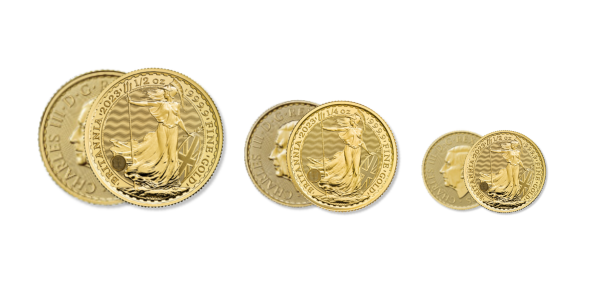
Don’t Buy Proof Coins
The Mint produces American Eagle Coins for collectors with proof and uncirculated finishes. The gold and silver coins are released in both proof and uncirculated finishes each year. These carry a higher premium because of their supposed collectible value and verified condition. However, if your purpose for buying gold is as wealth insurance, these coins carry no additional numismatic value.
In 1933, President Franklin Delano Roosevelt made it illegal to own gold. By Executive Order, the government confiscated gold from U.S. citizens, and it remained illegal to own it until 1975. One loophole in the Executive Order allowed citizens to keep limited numismatic or collectible rare coins. As a result, for many years since gold was once again legal for citizens to own, many rare coin dealers (not all) have tried to sell rare coins based on the fear of gold being confiscated again.
However, as of 1971, gold and the U.S. dollar are no longer convertible. So, there is no longer a reason for the government to confiscate, and you should not be scared into buying high premium rare coins to protect against that possibility.
Don’t Buy Jewelry
Jewelry is a beautiful way to own gold and silver for every day or special occasion use. Jewelry made with precious metals is not a useful investment as it carries a high markup for its aesthetic value that you will likely recoup very little of if you have to sell it.
And it’s important to remember that gold jewelry is rarely made from pure gold and when selling your gold, you will only get paid for the parts that are pure gold. 10-, 14- or 18-karat gold is comprised of gold and other alloys that make it durable for wearing.
Designer or antique jewelry could be worth more to sell as a finished piece than for its gold metal content, but you’re still unlikely to get back the full value of what you paid for it. Meanwhile, reputable gold and silver bullion is intended to be used as a store of value.
Buy gold and silver jewelry for sentimental value as a gift or for aesthetic value, but do not buy it as an investment.

Don’t Buy Non-Bullion Physical Gold
Gold currency notes have recently become popular with the idea that they could be spent like fiat currency. It’s an innovative concept and some are attracted to the idea of being able to once again spend gold as legal tender. However, the expense to produce these thin, polyester-backed bills means such high premiums that it will likely never be a viable form of holding value when it comes to gold ownership.
Don’t Buy Collectibles
Unique! One of a kind! Rare! Unfortunately, these items tend to carry a high mark-up that does not add additional return above the melt value should you decide to sell.
If it tickles your fancy to have gold coins featuring designs inspired by the Lord of the Rings, precious metals melted into shapes like dice or bullets, or silver bars marked as “Beskar steel” for fans of The Mandalorian, you’re free to spend your money on whatever gimmicks you like.
But be wary of anything marketed as limited edition. Sure, there’s a slim chance they might one day hold collectible value like baseball trading cards, but more likely, they’ll go the way of most collectibles… valuable for your personal entertainment and display, but should not be considered an investment beyond their melt value.
Conclusion
Gold is on investors’ minds. It is an asset that is 100% worthwhile to own, and it is once again on the rise.
Still, it makes sense to consider carefully what precious metals products to add to your holdings.
And always, always, always, ask this question before buying anything.
“When I am ready to sell, will you buy this back from me?” If the answer is no, DO NOT buy from them… period.
Buy safely, and buy well!


